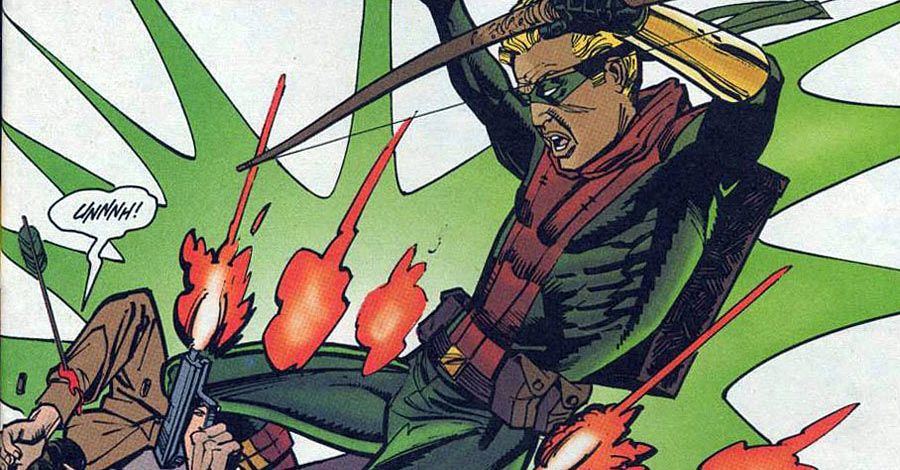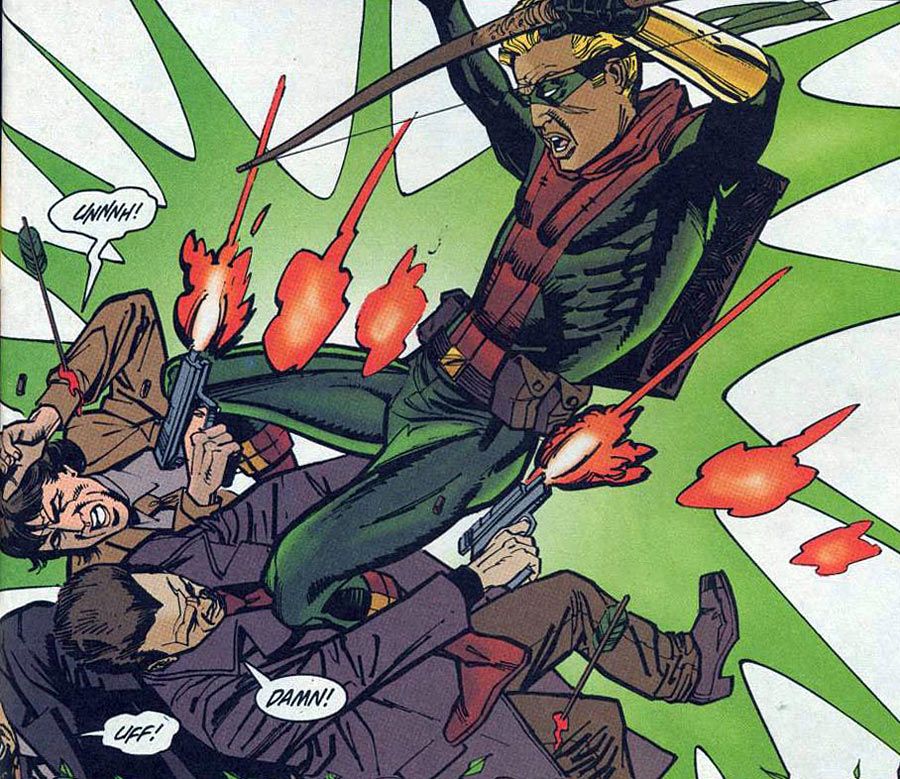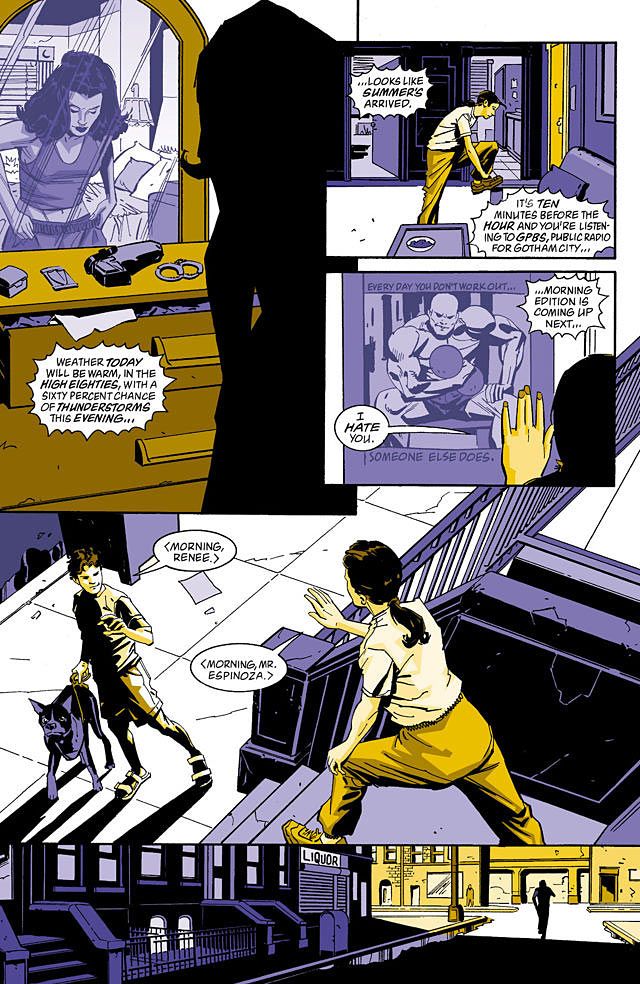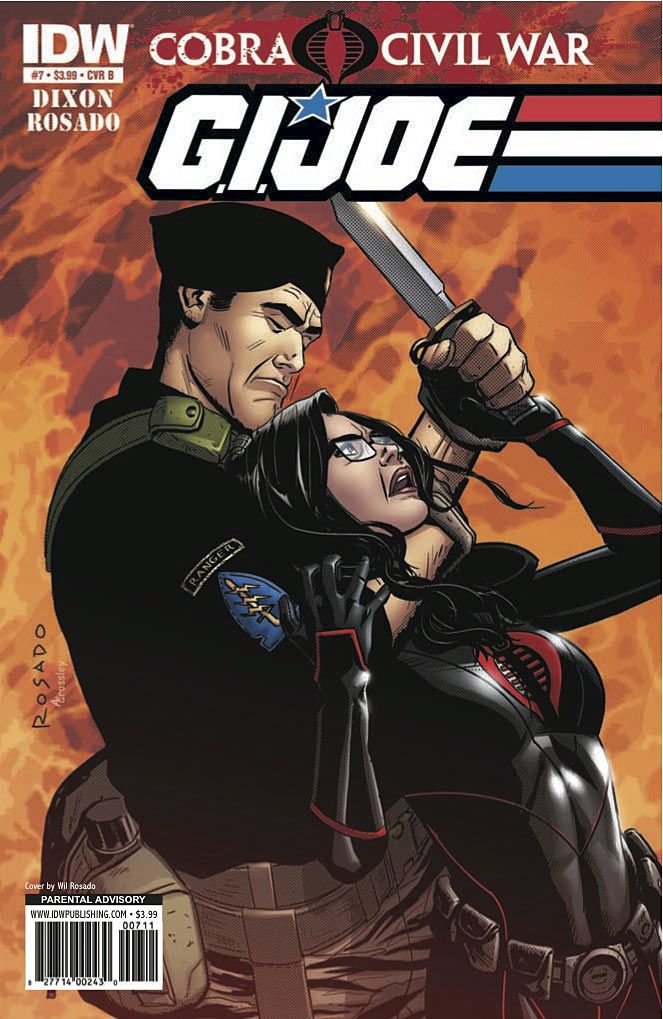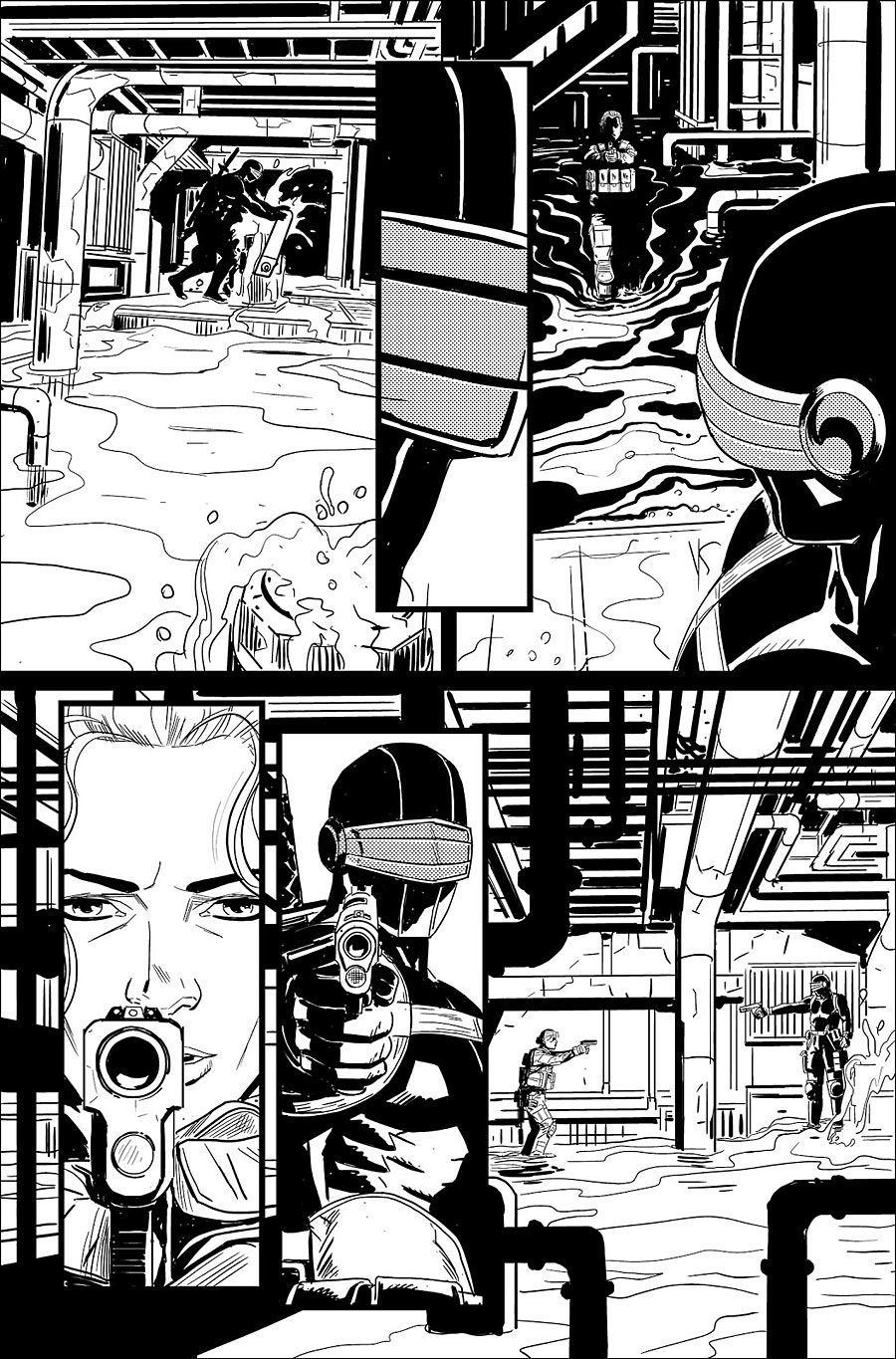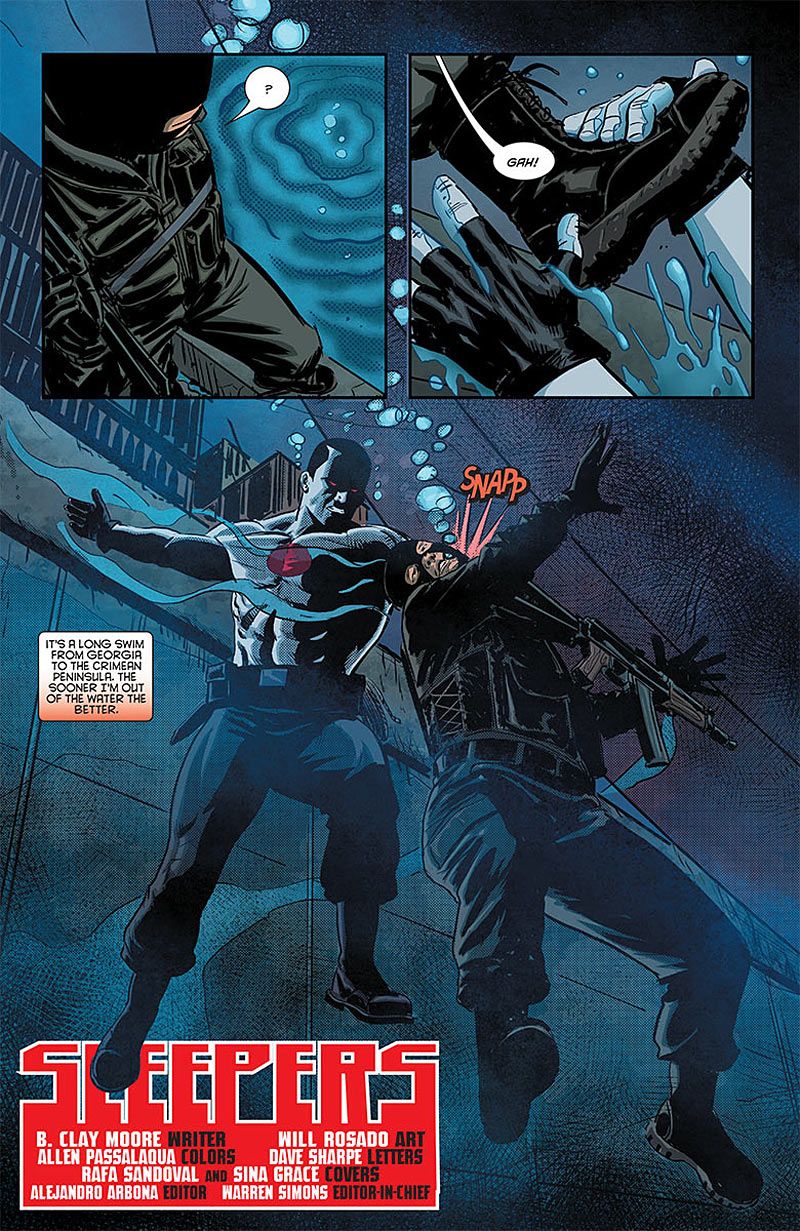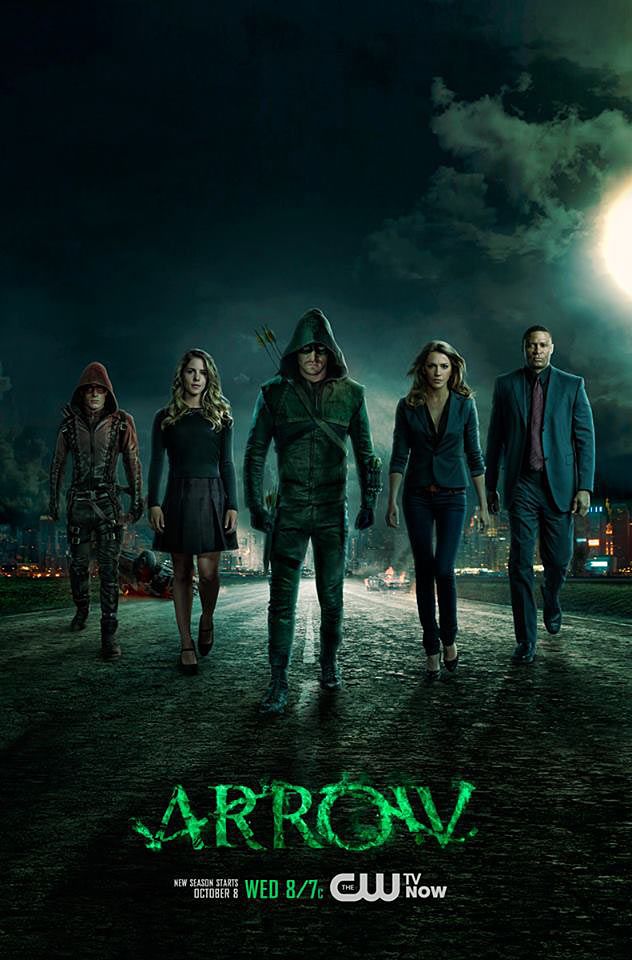THE MISSION is a weekly column spotlighting diversity in comic books, graphic novels, and popular entertainment.
The interviews and editorials featured will focus on successful entrepreneurs, whose accomplishments serve the goal of creating an equally diverse creative and business landscape.
Will Rosado is a Brooklyn-based Illustrator who began his career at Marvel Comics, but soon after settled into a regular penciling job on "The New Titans" at DC Comics, which led to his next regular job on "Green Arrow." In addition to Marvel and DC, Will has illustrated stories for Valiant Entertainment and IDW Publishing. Titles he has worked on include "Detective Comics," "Batman," "Robin," "Nightwing," "Birds of Prey," "Avengers: Earth's Mightiest Heroes 2," "Iron Man," "G.I. Joe" and "Bloodshot."
Will is an in-demand production artist in the New York City TV commercial world, having illustrated storyboards for Jack Daniels, Subway, Ford, Nissan, Ikea, JP Morgan Chase Bank, Citibank, Clear, McDonalds, Smirnoff, Budweiser, Coke, Verizon, Tia Maria, Cadbury, Target, Google, Samsung and more.
Will Rosado is living The Mission.
Joseph Phillip Illidge: You're well known for working on popular DC Comics characters like Batman and Green Arrow, but your mainstream comics' career started at Marvel Comics. How did that happen, and did working at Marvel directly result in you landing a monthly comic book gig at DC Comics?
Will Rosado: My first work at Marvel came about through my friendship with Chris Batista, whom I met while attending the School of Visual Arts. Chris was offered the regular gig on "Steel" from DC Comics while working on a story arc on "G.I. Joe" for Marvel. I had just graduated from New York's School of Visual Arts, and Chris knew what a huge "G.I. Joe" fan I was, so he arranged a meeting for me with the "G.I. Joe" editor. Chris called on Friday afternoon and by Monday I had three new "G.I. Joe" sample pages to show the editor. I was hired on the spot.
I worked off and on at Marvel for about a year after that before ending up at DC Comics. While at Marvel, I met Pat Garrahy. I think he was the editor on "Daredevil" during Scott McDaniel's run. Pat was off to DC Comics to edit a bunch of books and I caught him while he was cleaning out his office, so I figured I would show him some of my work. He offered me an issue of "The New Titans" to work on, and I think I was officially offered the regular art chores on the book soon after completing that first issue.
The body of work from your run on "Green Arrow" continues to be highly regarded, but the Green Arrow character you illustrated was not Oliver Queen, the character from the CW television show "Arrow," but his son, Connor Hawke.
Connor was not only a character of mixed heritage, but there were speculations as to whether he was gay or bisexual. Did these factors make Connor Hawke a controversial character, or did the character seem to become more popular as a result of these aspects of diversity?
I liked the character a lot, but I don't think Connor was controversial or popular. He was shy and awkward but kicked butt when needed. I was busy drawing the book, so I never got a sense of how the character was being received by the readers. Mostly, I hear from other artists and writers who remember my run on the book.
While working on "Green Arrow," how did you manage to keep the book interesting? To prevent yourself from becoming bored with the character and his world?
I had a lot of fun early in my "Green Arrow" run. My first handful of story arcs took place in Asia (Mongolia, Japan, South Korea, Thailand) and required lots of research. After a few arcs, I began to lose interest in the Connor vs. street thugs' stories. I think I spent a little over a year on "Green Arrow," then moved on. I was hoping for more of the DC Universe in the book. Black Canary and Oracle were in one or two issues, and I did a fill-in with The Flash and Green Lantern which was fun.
After being the artist on a variety of titles for the Batman editorial office, you entered the advertising field. Why did you make the change, and how has that career shift impacted your life to this day?
I "quit" comics for the first time in '98. I got tired working 16-20 hours a day. I kept that schedule for about six years before I decided I needed a change. I ended up at a dotcom for a few years, got laid-off from that, then went back to freelance. I was still drawing comics here and there during that time, but nothing regular.
It wasn't until 2004 or 2005 that I started drawing storyboards regularly for ad agencies. Eventually, I transitioned over to shooting boards for production houses. I enjoy the shooting boards much better than the agency boards. With the production work, I know that most of what I draw will be used to make a commercial, music video or animations.
You illustrated an issue of writer Greg Rucka's critically-acclaimed run on "Batman: Detective Comics," which focused on Renee Montoya, the Latina member of Gotham's Major Crimes unit. More than any other comic book you've done in your career, that issue of "Batman: Detective Comics" has the highest level of interest from collectors wanting to purchase original pages.
To what do you attribute that? Especially since the issue, "Batman: Detective Comics" #747, does not have a lot of Batman in it?
Batman never seemed to be in any of the Bat books I worked on, so I was cool with Montoya. Anyway, Greg Rucka is the reason for the attention on that issue. Usually people will ask for Montoya pages or pages with Crispus Allen and Montoya, and then say that they're fans of Rucka. It was a good story to draw -- in the issue, Montoya is turning 29 and I think I was turning 29 or may have just had a birthday. So I guess I was simpatico with Renee in that issue. I even drew myself on a page walking my dog from when I was a kid.
The "G.I. Joe" series may be the title in which you managed to leave the greatest aesthetic mark, and it requires a lot of research. Additionally, the characters have to look more real-world than a Green Arrow or Batman. Since your style is very naturalistic, did you feel "G.I. Joe" played perfectly to your strengths as an artist?
I've been drawing "G.I. Joe" since I was twelve years-old. When I was a kid, all I dreamed about was drawing G.I. Joe (and the Avengers). I was happy to be able to draw two versions of the Joes. The first being the standard Joes based on the toy designs for the Marvel book, and then the real world tactical-looking Joes for the IDW series. I like drawing the guns, gear and all the other military stuff. Who doesn't love plate carriers and pouches and BDUs?
Something that recently occurred to me about "G.I. Joe" is that the team may represent the greatest amount of diverse characters in one group within all of mainstream comics, even more so than Marvel's X-Men at any point in their history. Furthermore, "G.I. Joe" has been doing it since the '80s. Did the same occur to you, and did you enjoy illustrating a team of heroes from so many different ethnicities and cultures?
Yeah, I think the toy company was good with mixing it up with diverse characters from all walks of life. I remember seeing the character Zap was a Latino from NYC and thinking, "Wow... his name is Rafael Melendez and there's a toy and he's in the comic." That was crazy! I think the only other Hispanic comic book character I knew of at that time was White Tiger from Marvel (didn't read a lot of DC growing up). They've changed the race and or sex on some of the Joes over the last few years. Ripcord, Dialtone and a few others have been changed to bring more diversity to the books.
Recently, you were the artist for an issue of "Bloodshot" for Valiant Entertainment. Since this was your first work for the revitalized Valiant, did the step outside of the "G.I. Joe" comfort zone make the work more interesting for you?
The interesting thing about the "Bloodshot" book was working with a writer not named 'Chuck Dixon.' I've worked with Chuck so much I've forgotten what it's like working with another writer. Other than that, it was similar to work I'd done before, with maybe a few more exploding heads.
Due to the tight relationship between the film/television world and comics now, has your career been impacted at all by having illustrated books with characters now featured in "Arrow" and "Gotham?"
I have to say there's been absolutely no impact on my life because of the "Arrow" or "Gotham" shows. Not sure how I feel about "Gotham" yet, but I love "Arrow." I like seeing some of the characters I've drawn make appearances on the show.
The comic book industry, like various other media and entertainment fields, has certainly bred its share of creators with large egos, yet you maintain a grounded perspective. How has that helped you as an artist in comics?
I haven't done anything to warrant having an ego. My brain isn't wired that way. I've had a lot of failure in my life and that makes me appreciate the fact that I'm able to make a living by drawing.
Finally, the early part of your career included drawing the 2020 version of Marvel Comics' Iron Man. Since that's not far in the future anymore, do you think you'd get a kick out of using your improved skills to tackle Iron Man 2020 in a few years?
Sign me up! I'd love to do another "Iron Man 2020," especially in the year 2020. [Laughs]
Joseph Phillip Illidge is the Head Writer for Verge Entertainment (www.verge.tv), a production company co-founded with Shawn Martinbrough, artist for the graphic novel series "Thief of Thieves" by "The Walking Dead" creator Robert Kirkman, and videogame developer Milo Stone. Verge has developed an extensive library of intellectual properties for transmedia development. Live-action and animated television and film, videogames, graphic novels, and web-based entertainment.
Joseph has been a public speaker on the subjects of race, comics, and politics at Digital Book World's forum, Digitize Your Career: Marketing and Editing 2.0, Skidmore College, Purdue University, on the panel "Diversity in Comics: Race, Ethnicity, Gender and Sexual Orientation in American Comic Books," and at the Soho Gallery for Digital Art in New York City.
His latest project is "The Ren," a 200-page graphic novel about the romance between a young musician from the South and a Harlem-born dancer in 1925, set against the backdrop of a crime war and spotlighting the relationship between art and the underworld. "The Ren" will be published by First Second Books, a division of Macmillan.
["The Mission" banner designed by Gavin Motnyk.]

